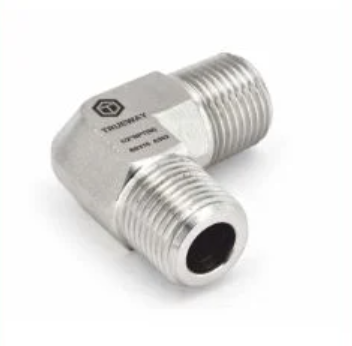In industrial settings where fluids and gases are transferred under pressure, selecting the right instrument pipe fittings is crucial. One of the most critical factors to consider is the pressure rating of the fittings. Using components that can’t withstand system pressure can lead to leaks, downtime, and even dangerous failures.
This blog will help you understand what pressure ratings are, how they impact your fitting selection, and what to look for when sourcing from trusted instrument pipe fittings manufacturers in India like Trueway India.
What Are Pressure Ratings?
Pressure rating refers to the maximum pressure a pipe fitting can handle safely under specific conditions without failure. It’s usually measured in PSI (pounds per square inch) or bar.
Why Pressure Ratings Matter
Choosing pipe fittings with the correct pressure rating ensures:
- Safe system performance
- Long-term durability
- Compliance with safety standards
Factors Affecting Pressure Ratings
1. Material Type
Stainless Steel Instrument Pipe Fittings
Stainless steel, especially grades like SS 304 and SS 316, offers high pressure tolerance, corrosion resistance, and temperature durability—making it ideal for critical operations.
2. Fitting Design
Wall Thickness and Thread Type
Thicker walls and stronger threads contribute to a higher pressure rating. Instrument pipe fittings come in various designs such as compression, NPT, socket weld, and butt weld types.
Standards and Classifications
3. ASME & ASTM Standards
Class 3000, 6000, and 9000
Fittings are categorized based on pressure classes defined by ASME B16.11, with Class 3000 fittings being suitable for medium pressures and Class 9000 for high-pressure environments.
4. Temperature Considerations
Pressure De-rating at Higher Temperatures
As temperature increases, the pressure-handling capacity of the fitting decreases. This must be factored into system design.
Application-Specific Insights
5. Oil & Gas Industry
High-Pressure Environments
In sectors like oil & gas, Stainless Steel Instrument Pipe Fittings with high-pressure ratings are essential for safety and performance.
6. Chemical & Power Plants
Corrosive and Pressurized Systems
Systems that handle corrosive media under pressure demand fittings with dual resistance—pressure and chemical.
Manufacturer’s Role in Pressure Safety
7. Testing and Certification
Hydrostatic and Burst Testing
Reputable Instruments Pipe Fittings Companies perform rigorous testing, including hydrostatic and burst tests, to certify their pressure ratings.
8. Material Traceability
Documentation and Batch Control
High-quality manufacturers like Trueway India ensure that every fitting comes with traceability records for the raw material and test results.
How to Choose the Right Fittings for Pressure Conditions
9. Know Your System Requirements
Maximum Operating Pressure
Always consider the highest possible operating pressure, including surge or transients.
10. Match with Compatible Components
Valves, Tubing & More
Your fittings must match the pressure ratings of adjacent components such as valves, tubing, and instrumentation.
11. Consult With Experts
Partner With Trusted Manufacturers
Work with reliable instrument pipe fittings manufacturers in India who understand system pressures and provide expert guidance.
12. Consider Future Scalability
Design for Expansion
Opt for fittings rated slightly above your current needs to allow future scaling without full system redesign.
Conclusion
Pressure rating is not just a technical specification—it’s a vital safety feature. When choosing instrument pipe fittings, consider material type, manufacturing quality, design standards, and pressure-temperature relationships.
A trusted Instruments Pipe Fittings Company like Trueway India offers reliable solutions made from high-grade materials, tested to international standards, and tailored for various industrial environments.
Whether you’re working in oil & gas, power, or process control, make sure your fittings are pressure-rated to deliver consistent, safe, and long-term performance.















